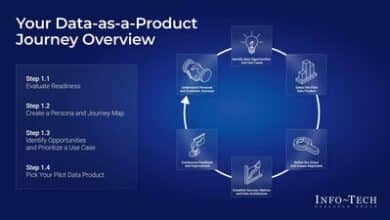Payment processes have undergone a massive shift in recent years, transitioning from traditional physical transfers toelectronic transactions. A key driver of this change is data importing, a technology that has the potential to streamline financial operations. This article explores the interface of data importing and payment processes, offering insight into how they intertwine to bring about financial efficiency and flexibility.
The Evolution of Payment Processes: From Physical Transfers to Electronic Transactions
The evolution of payment processes cannot be understated. Where once we relied on physical transactions, we have comfortably shifted towards electronic alternatives. This can be attributed largely to the ubiquity of digital technology and the internet.
Interestingly, this transformation has presented businesses with a unique challenge. While electronic transactions have improved the speed of financial operations, they also come with a deluge of data. Businesses need intelligent systems that can process this data and glean valuable insights from it, thereby optimizing payment processes.
Understanding Data Importing: The Catalyst for Efficient Financial Management
Enter data importing. In simple terms, data importing involves moving data from one system to another. This feature is incredibly useful when handling large volumes of data – a common characteristic of electronic payment processes.
Data importing can streamline financial management by enabling automatic data input into a system from different sources. Consequently, it eliminates human error, improves data accuracy, and enhances the overall efficiency of the payment process.
Integrating Data Importing into Your Payment Process: A Step-by-Step Guide
Integrating data importing into your payment process can seem daunting. However, with the right approach, it can be a smooth transition.
- Choose the right data importing tool: Look for a tool that suits your specific needs and has essential features like accuracy, speed, and security.
- Map your data correctly: Ensure that the data fields in your source match those in your destination system for seamless integration.
- Test the process: Conduct initial tests to identify and resolve any potential issues.
- Monitor and tweak the system : Keep a close eye on the system’s performance and make necessary adjustments for continual improvement.
Implementing these steps can significantly ease the process of incorporating data importing into your payment processes.
Overcoming Challenges of Implementing Data Importing: Proactive Solutions
Like any technological implementation, data importing is not without its challenges. Common bottlenecks include inaccuracies in data mapping, system compatibility issues, and concerns regarding data security.
However, most of these challenges can be addressed proactively. Adequate planning, thorough system audit, careful tool selection, and rigorous testing can mitigate these risks. Data security, in particular, can be strengthened by choosing a data importing tool with robust security protocols and features.
The Future of Payment Processes: Capitalizing on the Power of Data Importing
The future of payment processes undoubtedly involves data importing. This technology has shown promising results in streamlining financial operations and increasing business efficiency. Not only does it simplify complex payment processes, but it also provides valuable data accuracy and speed.
With continued advancements in data science and machine learning algorithms, the potential for data importing in payment processes is vast. Businesses that adopt this technology will experience enhanced operational effectiveness, making them well-equipped to tackle the ever-evolving financial landscape.
In conclusion, the integration of data importing into payment processes is a powerful accelerant for boosting financial flexibility and efficiency. By mitigating errors, enhancing data accuracy, and increasing speed, it’s clear that data importing shapes the future of the financial landscape. Because businesses, which harness this method, gain a competitive advantage, it makes sense to leverage this innovative technology. This is where Online Check Writer comes in. An all-in-one platform, Online Check Writer is revolutionizing the Business payment scenario by seamlessly integrating with over 22,000 banks and standard accounting and payroll software such as QuickBooks, Excel, Zoho, Gusto, ADP, and Bitpay. With features like instant payments, low-cost ACH, and superior data security, you can manage all your transactions in one convenient location. Trusted by over 1 million users and having processed over $20 billion in transactions, Online Check Writer is undoubtedly the smart choice for businesses looking to optimize their payment processes. Empowering you with control over all aspects of transaction management in a secure environment, Online Check Writer allows more focus on growing your business and less on payment processing. Join the league of efficient businesses by signing up with Online Check Writer today.
Don’t miss our latest Startup guide: Beyond Traditional Banking: Embrace Data Importing for Advanced Payment Solutions



